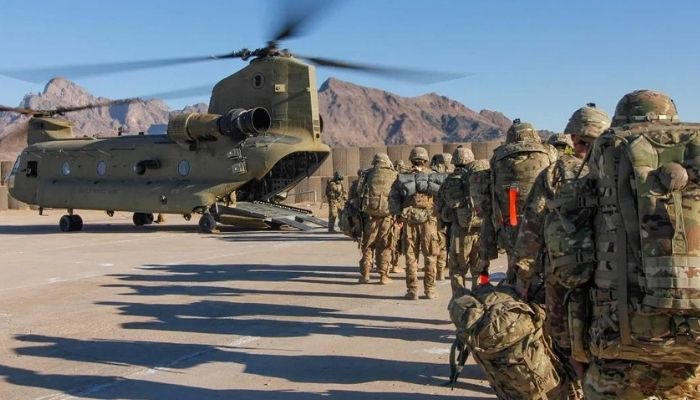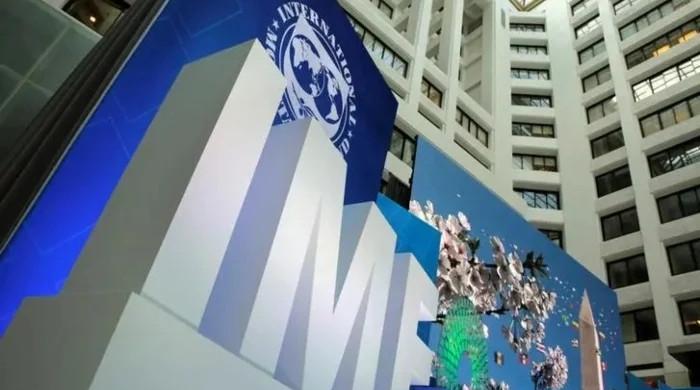From grandiose plans for Afghanistan to a quick exit: What went wrong?
"Geographically, Afghanistan’s terrain is treacherous and unforgiving. Historically, tribes have lived in the sanctuary of battle-weathered mountains"
December 25, 2021

Sitting by a roadside cafe in Manhattan, my friend Dan asked me if I was as surprised as Secretary Austin at the collapse of the Afghan army. I was surprised at the question.
A battle-hardened wise soldier once told me that there were three things that one was cautioned not to fight in developing a strategy: geography, history, and culture. The reference to culture was focused on the institutional traditions, which emanated from the interplay of the first two. The US must have ignored this advice in formulating its Afghan military strategy.
Geographically, Afghanistan’s terrain is treacherous and unforgiving. Historically, tribes have lived in the sanctuary of battle-weathered mountains for thousands of years, protected by their respective tribal militias. The interplay of geography and history has created a unique institutional link between Kabul and the provinces: a client-patron relationship. Kabul paid the tribes and their militias to keep them at bay and afloat at the same time. The tribes in reciprocity did not march on Kabul – at least most of the time.
This institutional relationship was one of the reasons why Kabul accommodated tribal militias and did not embark to build a large national army with an explicit intent to control the countryside. The Russian-sponsored government tried and, much like the US-sponsored government, failed.
The non-indigenous strategists of Afghan governments did not comprehend that a strong central army with the intent to regulate the fiercely independent tribes, which lived in suspicion of each other as well as of the outsiders, would serve as an antigen. At times this would manifest as the Mujahidin, and at others as the Taliban. The natural tribal reaction would cause a cytokine cloud of turbaned men diverse in ways of sects, tribes and even ideologies – woven together by only one common goal: demolish the foreign-sponsored Kabul.
This was not the only structural flaw in the Afghanistan strategy. There were multi-faceted factors, which contributed to the sudden meltdown of the Afghan army. First, the Afghan army was raised from the same battery of tribesmen, whom they were required to kill. It would have been simplistic to assume that soldiers would kill their tribal-kin, without their families, who often lived in the same villages, suffering mortal consequences. So, no surprise then that bullets were not fired.
Second, while the US was resolute in building a strong Afghan army, it did not think of building a sustainable economic model, which was essential to support a large army of over 300,000 soldiers. By some estimates, the US was spending over $4 billion per year on the Afghan army, with a total bill of greater than $88 billion over the past 10 years.
Little attention was paid to how this army would sustain itself. Where would the fully-armed and well-trained warriors go after the US departure? How would they be rehabilitated? Could these US-trained assets be used by nefarious organisations against the US interests? There should be little surprise, therefore, that demoralised and unpaid Afghan soldiers quietly walked across the blurry and unsustainable institutional lines to diffuse into centuries-old tribal sanctuaries.
Third, a soldier only wills to die for a cause. Ask any US marine or a war veteran to confirm. For what higher purpose was the Afghan army expected to fight after the Doha talks? The top Afghan political leadership and the US administration alike were negotiating ‘safe exits’ with the Taliban principals. Nevertheless, both were disappointed when the soldiers took one too.
Finally, the Afghan army was ethnically and religiously lopsided with the participation of one kind of tribe (Northern Alliance, particularly the Tajiks) and not of the other (southern Pashtun belt). This divide was especially stark in the officer’s cadre. The northern and southern tribes are ethnically and religiously at odds with each other, and have been at daggers drawn since forever. The situation was further complicated by external influences. The northern tribes were closely associated with India and Iran, while the southern tribes had deep historical relationships with Pakistan. The sectarian and ethnic divide got accentuated to become a political and military mess because of proxy influences. The US war design must have been oblivious to these tensions. Or was it?
In essence, the US Afghanistan strategy was not organic, leading to, at best, mixed results. The sudden US withdrawal, perhaps well warranted from the US domestic perspective, transmitted suboptimal messages: A message of losing nerve and that of weakness was sent to its foes, and a message that the US would not stand by its allies was transmitted to its friends.
Pakistan, it appears, understood these messages prophetically ahead of time. After all, it had a near-identical previous experience of abrupt US extraction from the AfPak region in the early 1990s, which led to a chaotic civil war. Pakistan’s understanding may have been informed by General Kayani’s 3.0 framework shared with the US officials in 2010, in which he had predicted the 2021 outcome of the Afghan war and its army in a picture-perfect manner. Stop the grandiose plans of transforming Afghanistan and discuss a safe US exit, leaving behind a manageable end-state, was his advice. No one paid heed. Everyone recompensed in pain and blood.
Pakistan appreciated the organically-linked realities of Afghanistan, and was unwilling to bring the Taliban, tribal and sectarian war into its own backyard. Or perhaps Pakistan understood that geography would be unforgiving, history shall toss its weight, and culture would engage Pakistan into destruction and bloodbath for decades, long after the departure of the US.
Be that as it may, the US lost face and was irked. It required a scapegoat. The sardonic remarks of Pakistan’s prime minister did not help. US Deputy Secretary of State Wendy Sherman reacted with the new political doctrine of a de-hyphenated Indo-Pak strategy and a narrowly focused US relationship with Pakistan. It is unclear how narrow the new US focus will be. Equally ambiguous are the implications of de-hyphenation. Where is the US heading?
The US is important. It is deemed as the gatekeeper of sanctions imposed by the UN system, and of the flow of aid/loan from multilateral organisations. It directly controls $9.5 billion of the Afghan government’s reserves frozen in US banks, desperately needed by the Taliban administration. The US strategy would impinge upon the effectiveness of the pleas emanating from the OIC Extraordinary Session of the Council of Foreign Ministers. It is therefore critical to explore the AfPak geopolitical warp from the slant in the US eye – which I will explore further in the next part of this series.
To be continued...
The writer is a global strategist, currently serving as a member of the Senate and the chairman of the Senate’s Water Resources Committee.
Originally published in The News









